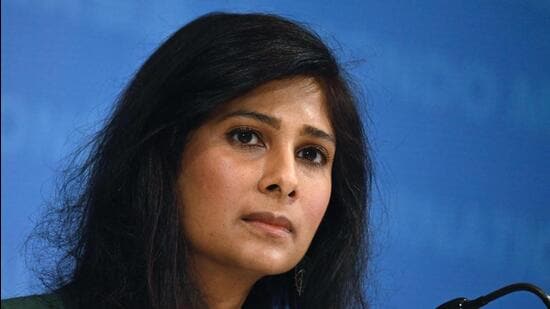Skilled, educated workforce must for Viksit Bharat: Gita Gopinath
India-born economist Gita Gopinath said the country had to make sure that its policies are not favouring automation inadvertently through tax incentives
India will need a highly skilled and educated workforce to transition to a developed economy, along with larger investments to wipe out gaps in critical infrastructure, Gita Gopinath, the first deputy managing director of the International Monetary Fund (IMF), said on Saturday.

The India-born economist spoke at a chat session with NK Singh, the chairman of the 15th Finance Commission, as part of the ongoing diamond jubilee conference of the prestigious Delhi School of Economics (DSE).
Singh asked the IMF’s No. 2 official how India should deal with technologies, such as robotisation and artificial intelligence (AI), which are “as much job displacing as job creating”. Gopinath said the country had to make sure that its “policies are not favouring automation inadvertently” through tax incentives.
AI-preparedness and skilling are also vital, she said. “What is absolutely critical for a developed-country status is that India needs a workforce which is much more skilled and educated. The depth and quality of education matters,” Gopinath said.
She was answering Singh’s question on what it would take for India to become a developed country, beyond just the “hard” per-capita income criterion given India’s strong growth and well-blended monetary and fiscal policies.
Average years of schooling in India are still lower than many other countries, Gopinath said. “India also needs to invest more in infrastructure. It is already making investments in public and digital infrastructure but there’s still a big gap,” the former alumna of DSE said.
Asia’s third-largest economy will also need robust institutions that support its development, including efficacy of judicial systems, she said. Labour-market flexibility, land reforms and keeping trade open are crucial for faster development, the IMF official said.
On a lighter note, Singh said he was surprised to know that Gopinath had dabbled in sports and modelling but instead chose to take up the “dismal science”, a phrase coined by Thomas Carlyle to describe the economics discipline. “Because I understand where my comparative advantage lies,” Gopinath said to a cackle in the audience.
Responding to a question from HT on the growing share of capital in GDP compared to that of labour, which could be impacting job-creation, Gopinath said: “That’s a very important issue. Capital intensity of growth has been higher. Policies should make sure you are not penalising firms for hiring.”
India also needs to fix skill-mismatch issues to create more jobs and incentivise states to implement the labour codes, a set of stalled legislation aimed at reforming labour laws, the Harvard economist said. India will need to create about 140 million jobs cumulatively until 2030, she said.
The World Bank currently categorises India as a lower-middle income economy, a classification for countries with a gross national income per capita between $1,086 and $4,255.
Singh and US economist Larry Summers, as co-chairs of a G20 experts’ group, had recently evaluated the role of multilateral development banks (MDB) and funds, such as the World Bank and IMF, amid a changing global economy.
“Governments have large financing needs, such as health, pension etc. Question is how do you fund all of these?” the IMF official said. According to Gopinath, there were constraints, such as the extent to which nations could depend on MDBs.
The fund’s first deputy managing director said that India should not increase its fiscal space by cutting spending but by expanding the tax base. “One example is to do more with the Goods and Services Tax (GST). You have to look under the hood. India’s fertiliser subsidy is pretty untargeted,” she said.
Most of India’s revenues come from indirect taxes, which has parallels to many economies. “Increase the tax net. It is not so much the tax rate but the loopholes…make sure you are getting more from capital gains and property tax. Higher productivity also improves debt-t- GDP (ratio),” she said.






